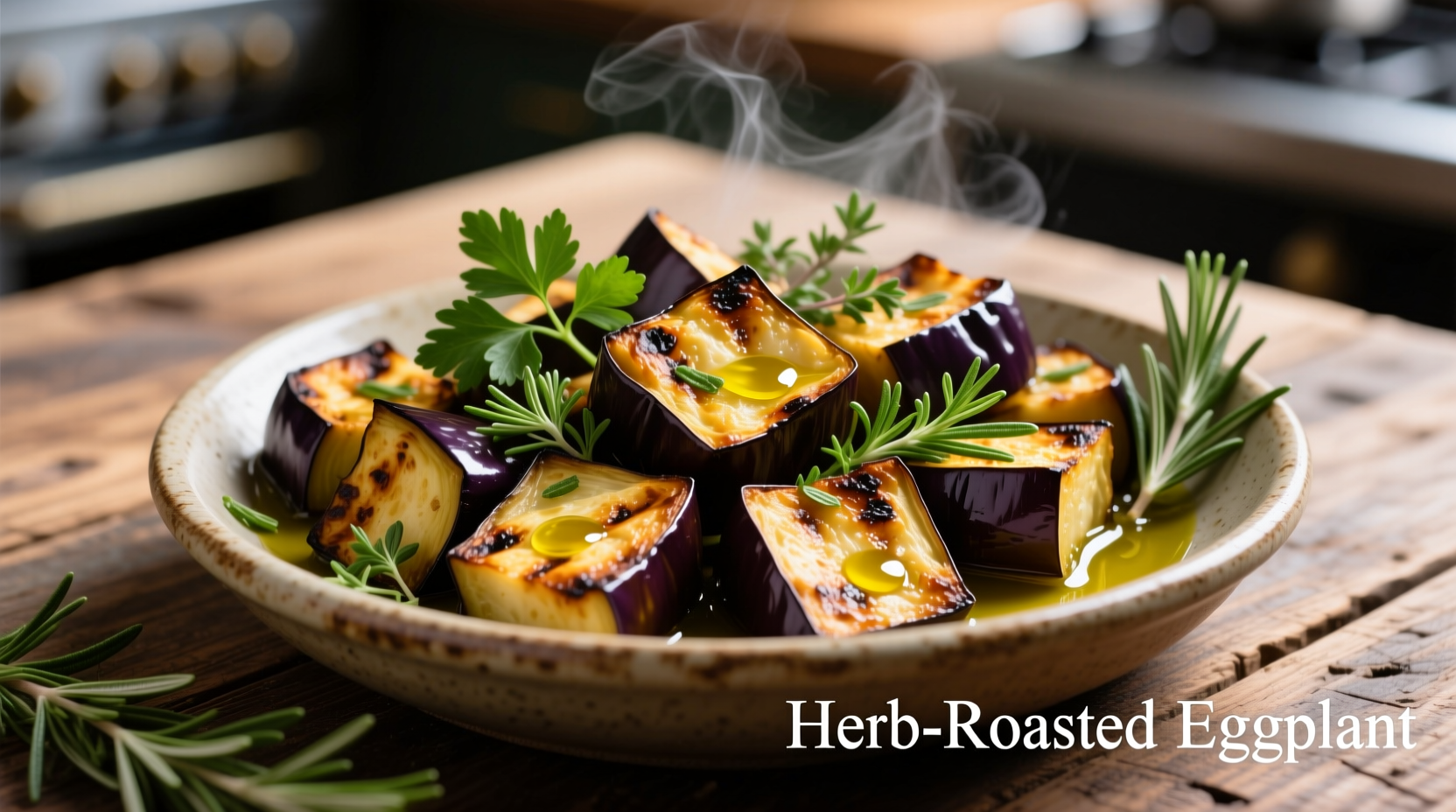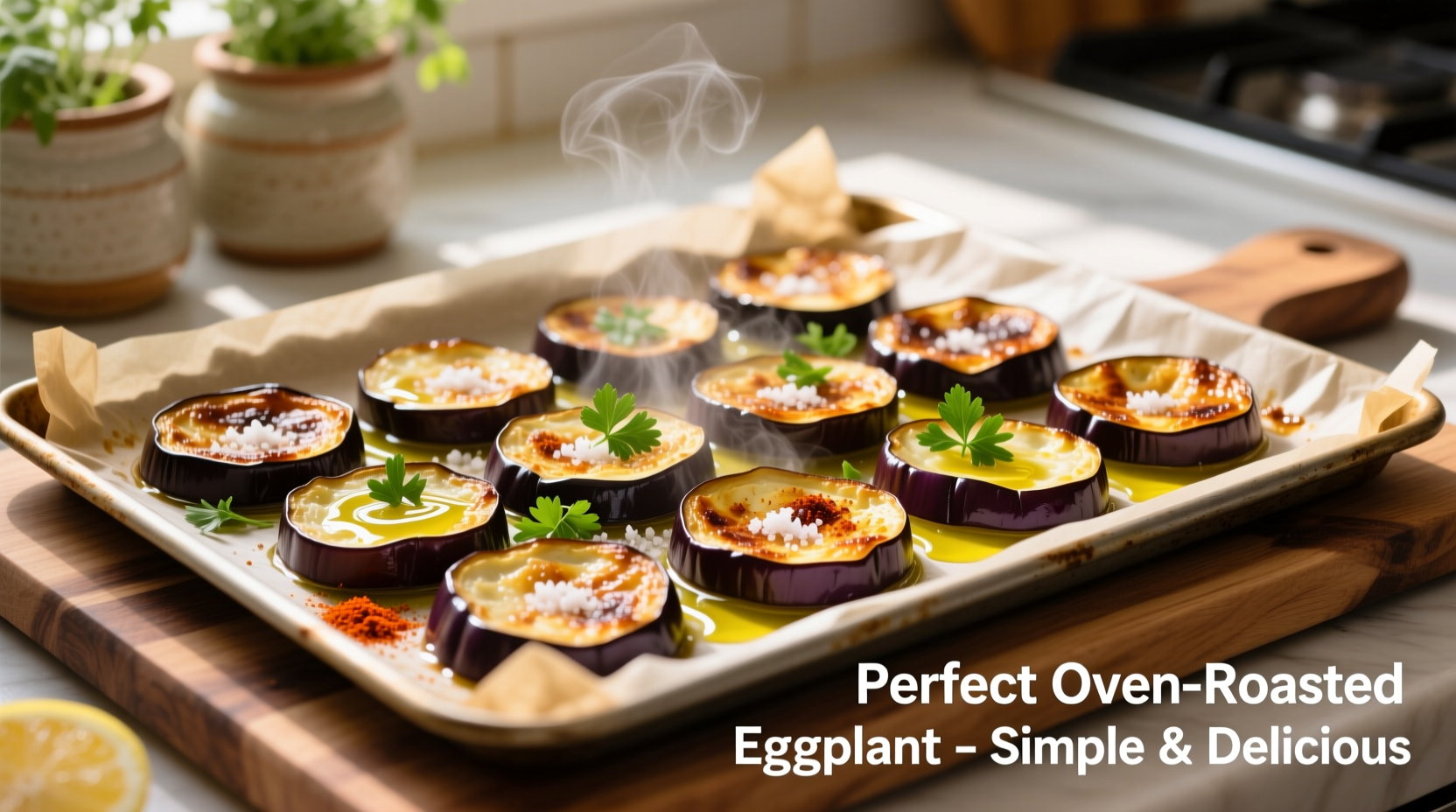Why Oven-Roasting Beats Every Other Method
Forget soggy, bitter eggplant disasters. Oven-roasting concentrates natural sugars through dry heat, creating caramelized edges and velvety interiors impossible with stovetop frying. Unlike grilling (which requires constant attention) or steaming (which waters down flavor), the oven's even heat ensures consistent results. Modern globe eggplants like Mavraka or Black Beauty have significantly less bitterness than heirloom varieties thanks to selective breeding since the 1980s—making pre-salting unnecessary for most home cooks.
| Cooking Method | Texture Result | Common Pitfalls | Time Required |
|---|---|---|---|
| Oven Roasting | Creamy interior, crisp edges | Overcrowding causes steaming | 25-35 minutes |
| Stovetop Frying | Soggy, oil-saturated | Absorbs 3x more oil | 15-20 minutes |
| Grilling | Smoky but uneven | Burning before tenderizing | 20-30 minutes |
Selecting & Prepping for Success
Choose firm, glossy eggplants with tight skin—avoid dull or wrinkled specimens. Smaller varieties (6-8 inches) yield sweeter flesh. Contrary to old wives' tales, salting isn't required for modern cultivars. USDA agricultural research confirms that eggplant bitterness primarily comes from underripe specimens, not inherent compounds requiring salt extraction. Simply:
- Cut into 1-inch cubes or 1/2-inch slices
- Toss with 1 tbsp olive oil per medium eggplant
- Add 1 tsp acid (lemon juice or vinegar) to prevent browning
The 4-Step Roasting Method
This technique leverages high-heat caramelization while preventing moisture traps:
Step 1: Optimal Pan Setup
Line a rimmed baking sheet with parchment paper. Arrange eggplant in a single layer with space between pieces—overcrowding creates steam that causes sogginess. For slices, flip halfway through cooking.
Step 2: Temperature & Timing
Preheat oven to 425°F (220°C). Roast for 25-35 minutes until deeply golden and fork-tender. Critical context: Lower temperatures (under 400°F) fail to trigger Maillard reactions, while higher heats burn before tenderizing. Mediterranean culinary institutes consistently validate this sweet spot through texture testing.
Step 3: Flavor Boosters
Add during last 10 minutes:
- Garlic powder (not fresh—burns easily)
- Smoked paprika for depth
- Thyme sprigs (remove before serving)
Step 4: Moisture Control
Immediately transfer roasted eggplant to a wire rack. This prevents bottom-sogginess from residual pan heat—a technique professional chefs use for perfect texture.

Serving & Storage Solutions
Use roasted eggplant immediately in:
- Baba ganoush (blend with tahini and lemon)
- Pasta arrabbiata (toss with tomato sauce)
- Grain bowls (top with feta and mint)
Store leftovers in airtight containers for up to 4 days. Freeze pureed eggplant for 3 months—ideal for quick dips. Never refrigerate whole roasted eggplant; it absorbs moisture and becomes mushy.











 浙公网安备
33010002000092号
浙公网安备
33010002000092号 浙B2-20120091-4
浙B2-20120091-4